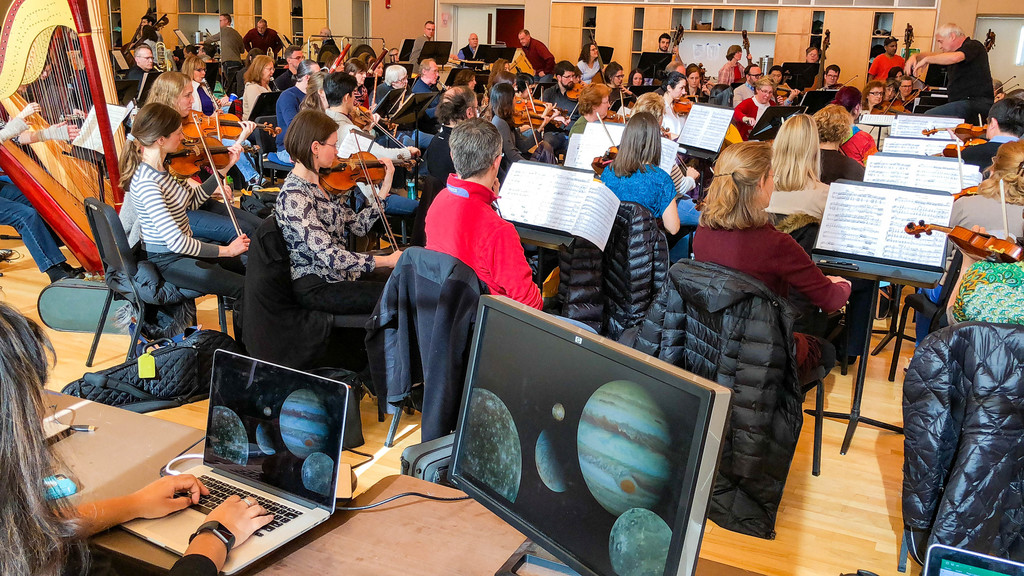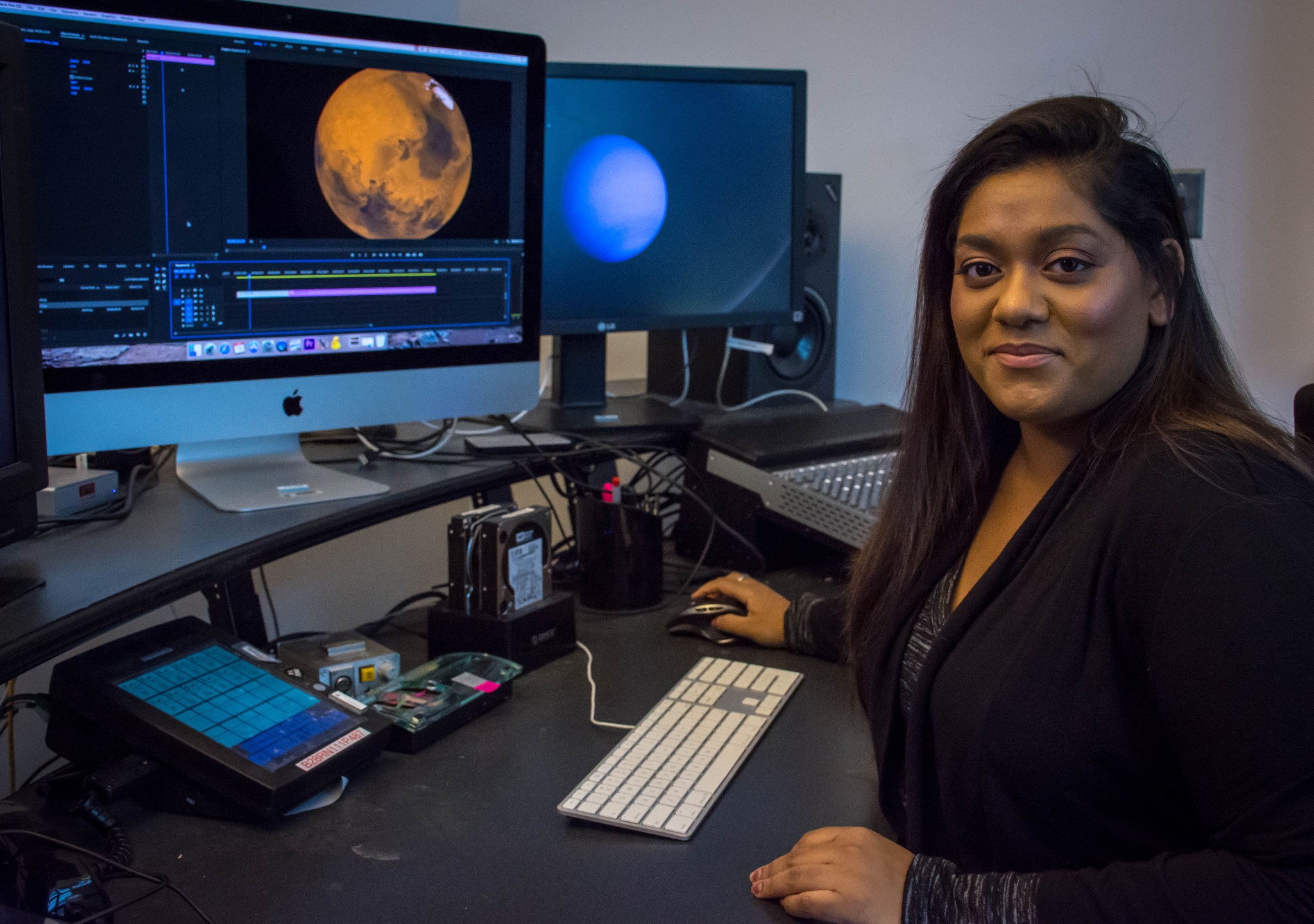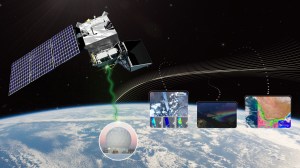For Gustav Holst and Claude Debussy, the beauty of Earth and its surrounding planets inspired them not to collect data, but to compose music. Now, 100 years after the first performance of Holst’s “The Planets”, audiences will have the chance to hear their music and see depictions of our awe-inspiring solar system simultaneously.

On Jan 27 and 28, the National Philharmonic Orchestra, in collaboration with NASA’s Goddard Space Flight Center, will present Cosmic Designs at the Music Center at Strathmore in North Bethesda, MD. In this marriage of music and space imagery, the orchestra will perform Claude Debussy’s “La Mer” and Gustav Holst’s “The Planets.” Video producers at Goddard worked to collect depictions of our solar system’s planets, as well as Earth’s oceans to accompany the music. Using both satellite pictures and animations, this presentation will illustrate tones in the music, making the audible narrative in the music come alive visually.
Swarupa Nune, a Goddard producer for “The Planets,” said she first had to listen carefully to the music and distinguish characteristics for each planet. Uranus, for example, is seen as an elusive planet, like a disappearing act; Holst even dubbed it “the magician.” Mars, by contrast, is powerful and warlike. Each of the planets’ perceived characters reveals itself in the music, which producers then translated into imagery.
After establishing the tones of each section, Nune worked closely with other producers to compile existing visuals and choose those that fit in the music. With help from data visualizers like Greg Shirah, Nune chose graphics to compose the video presentation.
Shirah is a data visualizer who has worked in Goddard’s Scientific Visualization Studio for more than 20 years. He has worked on plenty of animation projects before, including the planetarium show “Dynamic Earth” and an animation of Earth’s ocean currents called “Perpetual Ocean.” He was able to reuse some of the same images for Cosmic Designs, taking advantage of animations such as snaking lines to show currents or winds.
NASA’s producers did not include just animations to illustrate the music, they also tried to employ satellite photos as much as possible. This approach gives the audience a perspective of what they would see realistically, as if they were on a spacecraft looking down on the planet in question. Scott Sheppard, a Goddard summer intern, contributed several of the fly-by animations used in “The Planets.” His contribution was important especially for Uranus and Neptune where source material is much more scarce.
This project is different from the usual work of the producers at Goddard. In general, they are used to making shorter videos only a few minutes long. This production required a great deal of creativity and effort, and the producers are hoping to promote the revolutionary work taking place at Goddard.
Through this collaboration, the Goddard team strives to make the audience feel a sense of wonder at the images. This project is not only a junction of music and artistry, but it is also more broadly a union of art and science. By combining music with data-based representations, the science is accessible to everyone through a creative and engaging medium. The art and the science complement each other; and they form a striking bond. The concert demonstrates this ever-growing bond, and it will inspire others to get involved by learning more.
About Swarupa Nune:
Growing up, Nune took a deep interest in arts, starting her dancing career when she was only 4 years old. Having danced for more than 20 years now, she said that her interest in art began with her love of dance. In school, she enjoyed studying science and math, but she was especially drawn to a video production class at her high school, because of the opportunity to learn hands-on, and to use direct application of video editing techniques. Throughout her childhood, Nune loved watching Indian cinema as well as popular American media, but this class was her first exposure to producing video herself. Having found an interest in media production, she went on to intern for video production at NASA Goddard throughout her senior year of high school, through a program at her high school called QUEST. During her internship, she was able to see first-hand what goes into each step of creating, editing, and distributing media to the public.

Following her high school graduation, she studied business before switching to major in government. Despite her interest in video production, she did not study it in college. All of her skills are self-taught, tested through trial and error. During her time as a college student, she also kept up an internship at NASA Goddard in production. Upon her graduation from the University of Maryland College Park, she was offered a full-time job at Goddard. Nune decided to take a few months off after graduation, before beginning a two-year masters’ program for communications and public relations. Just last year, she earned her masters’ degree and stepped into the role of Internal Communications Video Producer at Goddard.
Over her time working at NASA, Nune has been a part of various important projects, including IMAX features at the National Air and Space Museum, promotion for the Wide Field Infrared Survey Telescope, in addition to internal videos to advocate diversity and inclusion within the Goddard community. Nune considers herself not just a producer, but also helping out in every step of the process from conceptualization to the release of media. Because Nune did not directly study science or engineering in higher education, she believes that she is better able to translate difficult scientific concepts in a way that the general public can understand. Swarupa Nune is thrilled to collaborate with the National Philharmonic Orchestra, and hopes it will inspire people to take more interest in Goddard’s studies of our solar system. She ultimately wants the community to realize the value of this scientific research, and to see how it can improve our lives.
By Ana Gonzalez
NASA’s Goddard Space Flight Center in Greenbelt, Md.


























